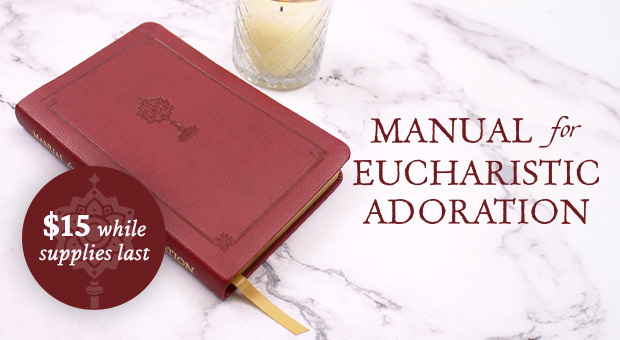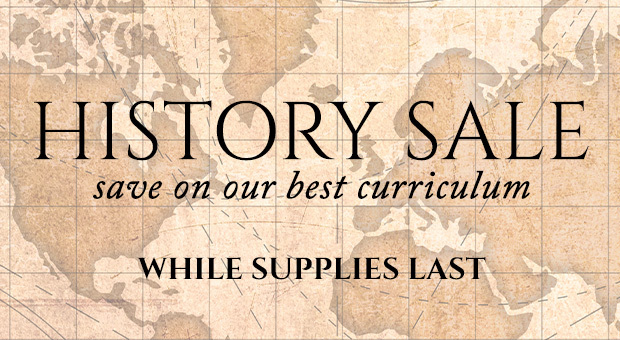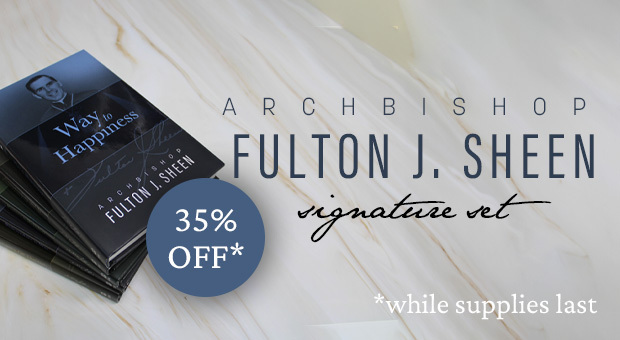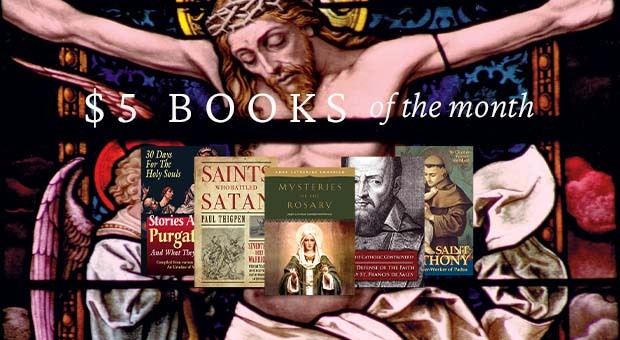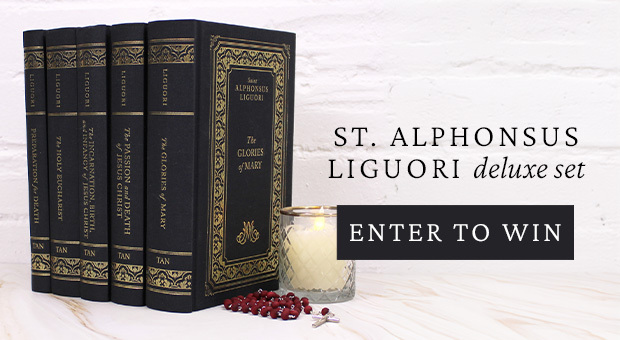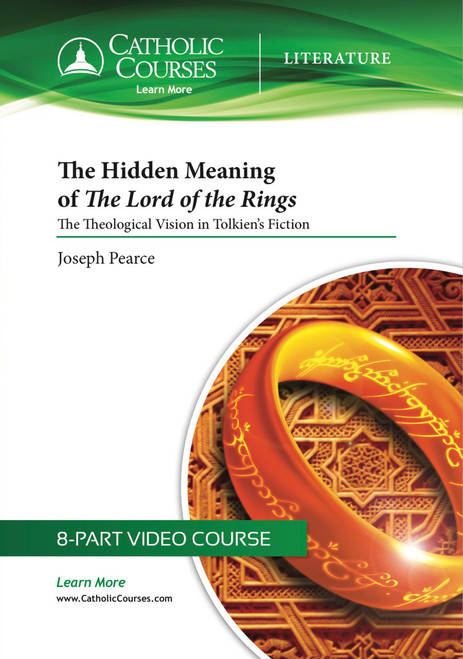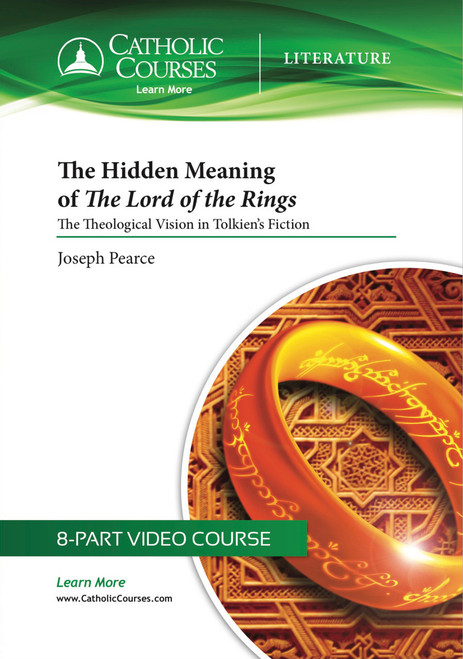Despite the absence of any direct mention of Christ or the Catholic Church, Tolkien described his work as "fundamentally religious and Catholic." He was able to infuse his fictional world with theological orthodoxy through his creation myth and world order, by endowing his protagonists with Christian virtues, and by incorporating themes of grace and mercy.
Tolkien's deep faith and creative philosophy emerges from the narrative as an unmistakable Catholic presence. The very foundation of Tolkien's Middle-earth, from its creation by Eru Ilúvatar, the one God, to angel-like Melkor s sinful rebellion, to the menacing presence of Sauron, the dark lord, supports Professor Pearce's argument for the Catholicity of the work. You'll learn how the One Ring symbolizes Original Sin, how the dates Tolkien chose for events in the story are theologically significant, how the Elvish waybread, lembas, figures as the Eucharist, and how Frodo acts as a Christ-figure.
Tolkien also describes his work as an allegory of "power usurped for domination" - a theme which is all the more important to examine in our modern world. Characters throughout The Lord of the Rings are tempted by power and the urge to seize it and wield it for personal gain and unlawful control. Throughout the journey of the Fellowship, various characters face the temptation of the One Ring - the wizard Gandalf, through whom the Ring would wield a terrible power; human man Boromir, who would use it to save his people; elf queen Galadriel, weary from fighting the "long defeat" against evil. Among the characters who do usurp power for domination are Saruman, the white wizard who succumbs to evil, whose machinations at Isengard only bring more evil into Middle-earth.
Over the eight lectures in the course, Professor Pearce highlights connections, allegories, and insights which will expand your reading of The Lord of the Rings. It is said that art holds the mirror up to life. This is the reason that art is "real" and fiction is "true". The Lord of the Rings enjoys such fame and popularity because in a way, it shows us ourselves in the characters. Learn more and discover for yourself the truth written into The Lord of the Rings with Professor Joseph Pearce.
- Introducing J. R. R. Tolkien: The Man behind the Myth
- Our first lecture examines the importance of understanding the personhood and beliefs of J.R.R. Tolkien in order to understand his works.
- True Myth: Tolkien, C. S. Lewis & the Truth of Fiction
- This second lecture discusses the philosophy of myth which shaped The Lord of the Rings and how it developed from J.R.R. Tolkien and C.S. Lewis’s friendship.
- The Meaning of the Ring: “To Rule Them All, and in the Darkness Bind Them”
- In this lecture, the Ring is reveled as a symbol of sin in general, and Original Sin in particular. We'll also look at the consequences of indulging in sin.
- Of Elves & Men: Fighting the Long Defeat
- Elves and Men are integral to Tolkien’s description of The Lord of the Rings as an allegory of death and immortality.
- Seeing Ourselves in the Story: The Hobbits, Boromir, Faramir & Gollum as Everyman Figures
- In this fifth lecture, we’ll discuss how art is the mirror of reality and how some of Tolkien's characters reflect important truths about ourselves.
- Of Wizards & Kings: Frodo, Gandalf & Aragorn as Figures of Christ
- Through the characters of Gandalf, Frodo, and Aragorn, Tolkien introduces Christ into the story with a subtlety that refuses to be labeled as "allegory."
- Beyond the Power of the Ring: The Riddle of Tom Bombadil & Other Neglected Characters
- Far from being "throw-away" characters, Tom Bombadil, Treebeard, Radagast, and others all have important significance and point to Tolkien’s deep Catholicism.
- Frodo’s Failure: The Triumph of Grace
- During our final lecture, we’ll look at the climactic moment of Frodo’s failure on Mount Doom, his struggle with Gollum, and the paradox of triumphant providential grace.
• Through Shakespeare’s Eyes: Seeing the Catholic Presence in the Plays (Ignatius Press, 2010)
• Tolkien: Man and Myth, a Literary Life (HarperCollins, 1998)
• Literary Giants, Literary Catholics (Ignatius Press, 2005)
• Wisdom and Innocence: A Life of G.K. Chesterton (Ignatius Press, 1997)
• Old Thunder: A Life of Hilaire Belloc (Ignatius Press, 2002)
His articles have been published in Lay Witness, National Review, Distributist Review, and National Catholic Register. Professor Pearce is the recipient of an Honorary Doctorate of Higher Education from Thomas More College for the Liberal Arts and the Pollock Award for Christian Biography. He is co-editor of the St. Austin Review, editor-in-chief of Ignatius
Critical Editions, and editor-in-chief of Sapientia Press.
Homeschooling Products
The Homeschooling Set includes the Streaming Video and Homeschooling Course Guide. Each Course Guide contains everything needed for a student to complete the course, including:
- Lesson Plan
- Quizzes
- Final Essay
- Lecture Notes
- Answer Key
- Product Format:
- Streaming Video
- Grade:
- Ninth Grade
- Grade:
- Tenth Grade
- Grade:
- Eleventh Grade
- Grade:
- Twelth Grade
- Subject:
- English/Literature
